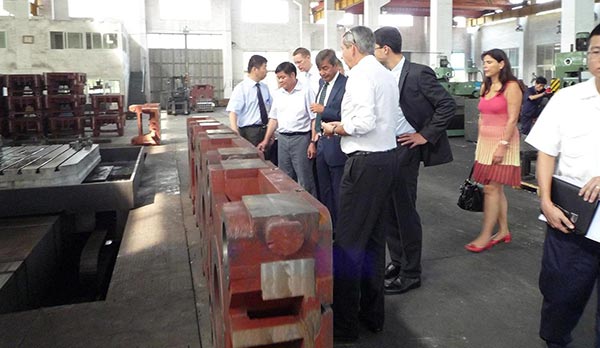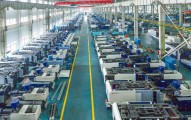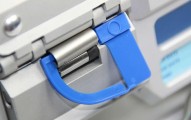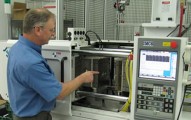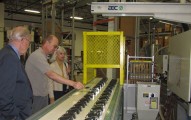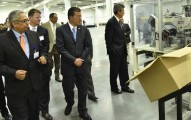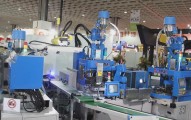Integrated Plastic/Metal Injection Molding Helps Cars Trim Weight
Although it consumes a scant 9 percent of European plastics production, the auto industry is driving plastics research in the region, said Mathias Weber, head of the injection molding department at the Institute of Plastics Processing at Germany’s RWTH Aachen University.
Under pressure to meet tough new European Union pollution standards (a fleet’s average emissions must be 130 grams CO2/kilometer next year and 95 CO2/km in 2020), automakers are scrambling for ways to put their cars and trucks on a diet. Hoods and body panels are obvious candidates for weight reduction, but so are myriad plastic-on-metal parts.
Weber’s focus on the key role of the auto industry was seconded by Andreas Poettler, manager of the processing and application technology department at injection molding equipment manufacturer Engel Machinery (Shanghai) Co., Ltd.
Weber and Poettler spoke at a Sept. 26 plastics technology seminar in Hong Kong.
“Automotive is one of the biggest drivers of innovation,” said Poettler, especially electric cars, which he pronounced “a megatrend.”
One solution to the weight challenge is integrated metals/plastics injection molding, which can shave precious grams — and manufacturing time — off the electronic circuitry that plays a big role in today’s motor vehicles. “We hope to combine the whole process in one production step,” Weber said.
For body parts, plastics can be bonded to sheet metal. Since 2006, IKV has been pioneering a whole host of intriguing applications by marrying liquid metal to plastic.
Integrated metal/plastic injection molding has strong appeal to the electronics industry, said Weber, demonstrating how injection molding and metal-die casting can be combined to manufacture a Bauhaus-inspired LED desk lamp.
Another hybrid approach is in-mold metal-spraying. “It’s quite a new process, [which IKV has been researching] since 2012, and therefore not fully automated. But we hope to combine the whole process in one production step,” he said.
Weber suggested one possible application: integrating the antenna into the back of a phone.
Hybrid approaches deliver more flexible and durable products, but their biggest advantage is as part of an integrated process that saves production time and labor costs while meeting highly precise standards, Weber said.
Despite their obvious benefits, Weber said lifecycle research had not begun on the best way to recycle hybrid plastic/metal products.
Weber’s presentation was a highlight of the annual conference, sponsored by the Hong Kong Plastics Manufacturers Association Ltd., with members of the 100-strong audience peppering him with questions afterward.
Car parts have long been a staple of Hong Kong and mainland manufacturers.
Dubbing optics a “key technology of the 21st century,” Weber outlined applications in cars, medical gear and communications technology. Plastics’ higher freedom of design and lower production costs offer manufacturers strong technological and economic incentives to replace glass, he said.
As anyone who’s ever strained their eyes on a cheap microscope can attest, optics manufacture has extremely low tolerance for particle contamination and distortions. Weber said that IKV’s research efforts are focusing on precise manufacture and homogeneous cooling, which reduces warping.
Production times can be slashed and a finished product’s Strehl ratio (a 0-to-1.0 measure of its quality) can be boosted by multilayer injection molding. Paradoxically, creating a lens in three layers, rather than one or two, is both quicker and much more precise.
“The inner layer can be produced at a lower mold temperature and thereby a very short cooling time,” Weber said. This “onion technique” can reduce cooling times by up to 35 percent, he said.
Weber also discussed foaming efforts — that is, having air bubbles in the finished product. Foamed plastics are obviously lighter, but also gain from reduced cycle times, warping and increased flowability due to lower viscosity.
Hollow parts are frequently made with gas- or water-assisted injection technologies. But in a dramatic video, Weber demonstrated the benefits of firing — albeit slowly — a bullet-shaped projectile through a product while it is being molded. The resulting inner surfaces are highly uniform, Weber said.
Engel’s Poettler evangelized energetically of “in situ polymerization,” which his company is developing. “We will create nylon directly inside the mold. So we have all the advantages of a thermoplastic.”
Besides weight savings, a key advantage of this new technique is recyclability.

